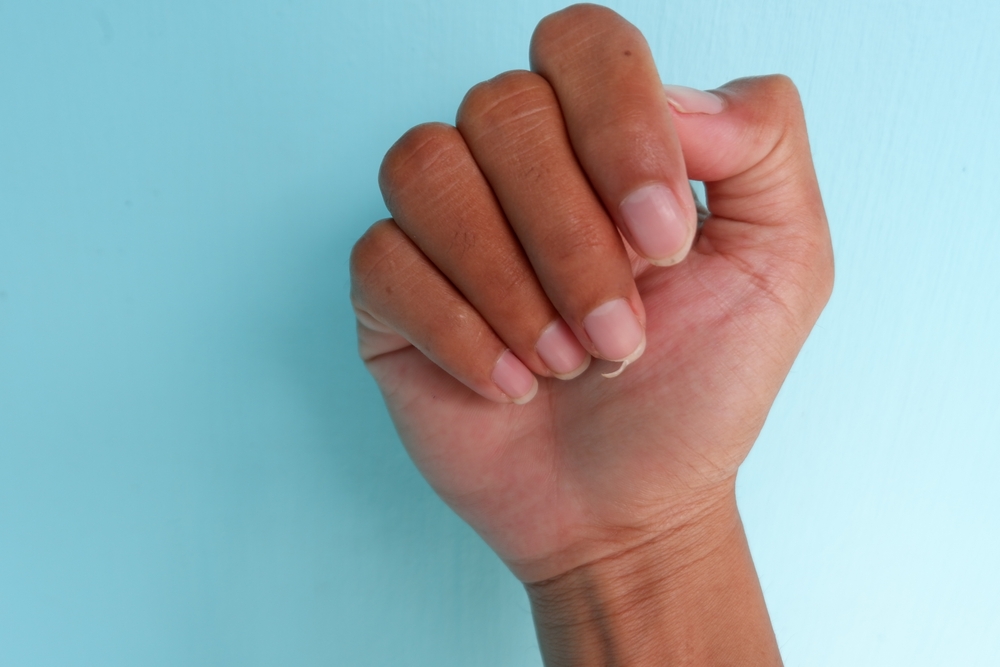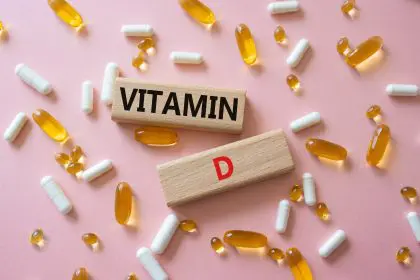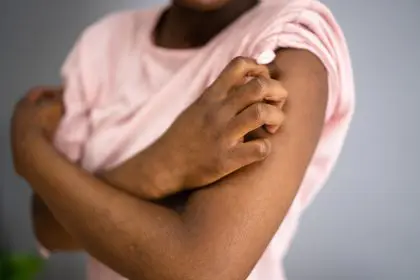Your fingernails might seem like simple protective coverings for your fingertips, but they’re actually sophisticated diagnostic tools that can reveal crucial information about your protein intake. These small, seemingly insignificant body parts serve as early warning systems, displaying visible signs of nutritional deficiencies long before you might notice other symptoms throughout your body.
The connection between nail health and protein consumption runs deeper than most people realize. Fingernails are composed primarily of keratin, a structural protein that requires adequate amino acid supplies to maintain strength, flexibility, and healthy growth. When your body doesn’t receive sufficient protein, your nails become one of the first places where deficiency symptoms manifest, creating a roadmap of your nutritional history that trained eyes can read like a medical chart.
Understanding what your fingernails reveal about protein intake can help you identify nutritional gaps before they progress to more serious health complications. The changes that appear in your nails often reflect protein deficiency patterns from weeks or even months earlier, making them valuable indicators of your body’s long-term nutritional status.
1. Horizontal ridges signal severe protein shortage
The first and most telling sign of protein deficiency appears as horizontal ridges running across your fingernails from side to side. These ridges, known medically as Beau’s lines, form when nail growth temporarily slows or stops due to insufficient protein availability. Each ridge represents a specific period when your body lacked adequate amino acids to maintain normal nail development.
These horizontal indentations typically appear about two to three months after a period of severe protein deficiency, reflecting the time it takes for nail growth to reveal nutritional problems. The depth and width of the ridges correlate with the severity and duration of the protein shortage. Deep, wide ridges indicate more severe deficiency periods, while shallow, narrow lines suggest milder protein inadequacy.
Multiple horizontal ridges across the same nail often indicate recurring periods of protein deficiency, suggesting ongoing nutritional challenges rather than isolated incidents. The spacing between ridges can help identify patterns in your eating habits, with regularly spaced ridges potentially indicating cyclical dietary restrictions or periodic illness that affected protein absorption.
2. Brittle, splitting nails expose inadequate amino acids
The second major indicator of protein deficiency manifests as increased nail brittleness and splitting. Healthy nails require a complex matrix of proteins to maintain their structural integrity. When amino acid supplies become insufficient, the nail plate loses its flexibility and strength, becoming prone to cracks, splits, and breaks that seem to occur with minimal stress.
This brittleness typically begins at the nail tips and progresses backward toward the cuticle as protein deficiency continues. The splits often occur in predictable patterns, with vertical cracks being most common initially, followed by horizontal breaks as the deficiency worsens. Some people notice their nails begin chipping like old paint, with small pieces flaking off during routine activities.
The brittleness associated with protein deficiency differs from damage caused by external factors like harsh chemicals or excessive water exposure. Protein-deficient nails tend to break cleanly rather than tearing raggedly, and the breaks often occur across multiple nails simultaneously rather than affecting just one or two fingers.
3. Slow growth reveals insufficient building blocks
The third sign of protein inadequacy appears as noticeably slower nail growth rates. Healthy fingernails typically grow about 3-4 millimeters per month, but protein deficiency can reduce this growth rate significantly. Many people first notice this change when their usual manicure schedule no longer matches their nail growth patterns, or when nail polish seems to last longer than usual because the nails aren’t growing as quickly.
The slowdown occurs because nail growth requires constant protein synthesis to create new keratin structures. When amino acids become scarce, your body prioritizes protein use for more critical functions like organ maintenance and immune system support, reducing the resources available for nail development.
Measuring nail growth requires patience and careful observation. Many people track this change by marking their nails at the cuticle line and monitoring how long it takes for the mark to reach the nail tip. Protein-deficient individuals often find this process takes significantly longer than the normal three to four months required for complete nail renewal.
4. White spots indicate protein synthesis problems
The fourth indicator of protein deficiency appears as small white spots or streaks within the nail plate. These marks, called leukonychia, occur when protein synthesis becomes disrupted during nail formation. The white areas represent regions where keratin production was inadequate or where the nail structure developed abnormally due to insufficient amino acid availability.
These white spots typically appear several weeks after the protein deficiency occurred, reflecting the time required for nail growth to bring the affected areas to the visible surface. The size and number of spots correlate with the severity of the protein shortage, with larger or more numerous spots indicating more significant deficiencies.
Unlike white spots caused by minor trauma or injury, protein-related leukonychia tends to appear across multiple nails simultaneously and often occurs in similar patterns on corresponding fingers. The spots may also have a slightly different texture than the surrounding nail, feeling slightly softer or more porous when touched.
5. Pale nail beds suggest protein malnutrition
The fifth sign of protein deficiency manifests in the nail bed itself rather than the nail plate. Protein malnutrition can cause the normally pink nail beds to appear pale or whitish, creating an overall washed-out appearance in the fingernails. This pallor occurs because protein deficiency affects blood protein levels, reducing the rich pink color that healthy circulation provides to the nail bed.
The paleness associated with protein deficiency has a characteristic appearance that differs from other causes of pale nails. It tends to affect all nails uniformly and often appears along with other signs of protein malnutrition like reduced muscle mass or slower wound healing. The pale color may also seem to shift or change depending on pressure applied to the nail, indicating compromised circulation.
This nail bed pallor can be particularly noticeable when compared to the nail beds of well-nourished individuals. The contrast becomes especially apparent when hands are placed side by side, with protein-deficient nails appearing noticeably less vibrant and healthy than those of people with adequate protein intake.
6. Curved nails reveal chronic protein shortage
The sixth indicator of protein deficiency appears as abnormal nail curvature, where the nails begin to curve unusually or develop spoon-like shapes. This condition, known as koilonychia, occurs when chronic protein deficiency weakens the nail structure to the point where it can no longer maintain its normal convex curve.
The curvature changes typically begin subtly, with nails appearing flatter than usual before progressing to actual concave shapes. The spoon-like appearance develops because the weakened nail plate cannot support normal growth patterns, causing the center to sink while the edges remain relatively elevated.
This nail deformity usually indicates prolonged protein deficiency rather than short-term inadequacy. The changes develop gradually over months of insufficient protein intake and may persist even after protein consumption improves, requiring complete nail regrowth to fully resolve.
7. Weak cuticles expose protein malnutrition
The seventh sign of protein deficiency appears in the cuticles and surrounding nail tissue. Protein malnutrition causes the cuticles to become dry, cracked, and prone to infection. The skin around the nails may appear thin and fragile, tearing easily and healing slowly when injured.
These cuticle changes occur because the skin cells around the nails require protein for maintenance and repair. When amino acids become scarce, the delicate tissues surrounding the nails become vulnerable to damage and inflammation. The cuticles may also appear to overgrow or become thicker as the body attempts to compensate for weakened nail structures.
The poor cuticle health associated with protein deficiency often coincides with other skin problems like delayed wound healing, increased susceptibility to infections, and general skin dryness. These surrounding tissue changes can provide additional confirmation of protein malnutrition when observed alongside nail plate abnormalities.
Understanding the timeline of nail changes
Fingernail changes related to protein deficiency don’t appear immediately after inadequate protein consumption begins. The timeline reflects the slow process of nail growth and the body’s ability to maintain some protein reserves for essential functions. Most nail changes become visible two to four months after protein deficiency develops, making them indicators of past rather than current nutritional status.
This delayed manifestation means that improving protein intake won’t immediately reverse nail changes. Complete nail renewal takes approximately six months, so visible improvements in nail health typically lag behind dietary improvements by several months. Understanding this timeline helps prevent discouragement when nail changes don’t improve immediately after increasing protein consumption.
The progressive nature of nail changes also means that ongoing protein deficiency will continue to create new nail abnormalities even while older changes are growing out. This can create a layered effect where different sections of the same nail show varying degrees of damage, reflecting the fluctuating protein status over time.
Factors that influence nail protein indicators
Several factors can influence how clearly fingernails reveal protein deficiency. Age affects nail growth rates and protein requirements, with older adults showing nail changes more readily than younger individuals. Hormonal fluctuations, particularly in women, can also affect how nail changes manifest during different life stages.
Underlying health conditions can complicate the interpretation of nail changes. Digestive disorders that affect protein absorption may cause nail abnormalities even when dietary protein intake appears adequate. Similarly, conditions that increase protein requirements, such as recovery from illness or injury, may trigger nail changes despite seemingly sufficient protein consumption.
Environmental factors like cold weather, chemical exposure, or frequent hand washing can also affect nail health independent of protein status. Distinguishing between protein-related nail changes and those caused by external factors requires careful observation of patterns and timing.
Recovery and prevention strategies
Addressing protein deficiency requires more than simply increasing total protein intake. The quality and timing of protein consumption significantly impact how well the body can utilize amino acids for nail health. Complete proteins containing all essential amino acids provide the best foundation for healthy nail growth and repair.
Gradual improvement in protein status typically produces visible nail changes within three to six months. The first signs of recovery often appear as stronger, more flexible new nail growth at the base of the nails, while the damaged portions continue to grow out and eventually require trimming away.
Maintaining adequate protein intake requires understanding individual needs based on age, activity level, and health status. Most adults need approximately 0.8 grams of protein per kilogram of body weight daily, but this requirement increases during periods of growth, healing, or high physical activity.
Your fingernails serve as remarkable indicators of your body’s protein status, providing early warning signs of deficiency that can help prevent more serious nutritional complications. By learning to recognize these seven key changes in nail appearance and structure, you can take proactive steps to address protein inadequacy before it progresses to more severe health consequences. Regular attention to nail health, combined with adequate protein consumption, helps ensure that these small but significant body parts continue to reflect optimal nutritional status for years to come.


















